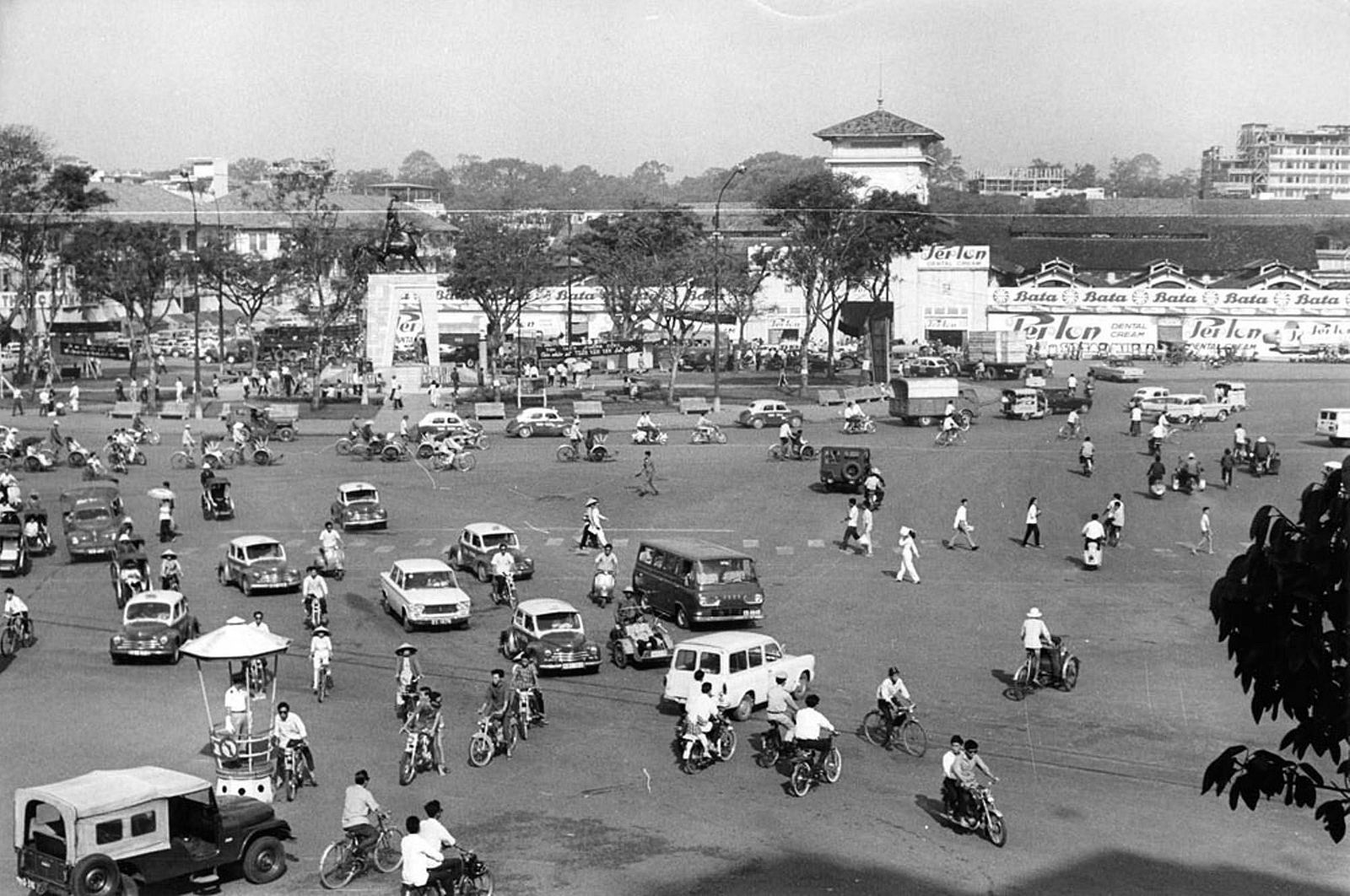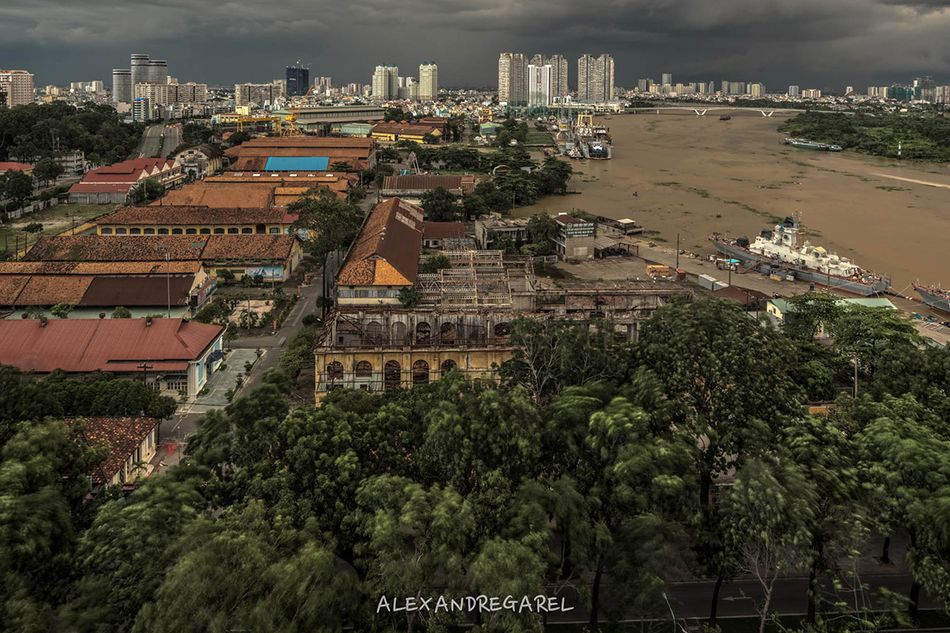In this, the first of a new series about the history of the famous streets and squares of Saigon and Chợ Lớn, Tim Doling looks at the history of Quách Thị Trang square.
For the first two decades of French colonial rule, the site now occupied by Quách Thị Trang square formed the easternmost border of a large swamp known as the Marais Boresse.
This was finally reclaimed in the early 1880s to facilitate construction of the Saigon-Mỹ Tho railway line, which opened in 1885 and ran from a terminus at the riverside end of modern Hàm Nghi boulevard right through the future square site, where a large steam locomotive depot was built.
The 0.322 hectare square we know today was laid out in 1912-1914 as the main market square in front of the new Halles centrales, now Bến Thành Market. In order to achieve this, the locomotive depot was demolished and the railway line was rerouted into a new terminus on the southwest side of the square, the area now occupied by 23-9 Park (the Phạm Ngũ Lão backpacker area).

A comparison of city maps dated 1878, 1898 and 1920 illustrates the development of the site from swamp to railway depot to market square.
Although it continued to be known for many years as the place du Marché (Market square), in July 1916 the square was officially named as place Eugène-Cuniac, in honour of long-serving former Saigon Mayor Eugène François Jean-Baptiste Cuniac (in office 1890-1891, 1892-1895, 1901-1906 and 1912-1915), one of the key advocates of the new market, who had died earlier that month.
The opening of the new Saigon Railway Station in 1915 was followed in 1923 by the inauguration of a new Halles centrales electric tramway terminus, thus transforming the square into one of the city’s most important transport hubs. Two bus stations — one on the east side of the market and the other on the west — also functioned here until the 1940s.

The second Saigon Railway Station opened in 1915 on the southwest side of the square.
Place Cuniac remained a simple open space until 1929, when a roundabout with landscaped gardens was installed at its centre.

Place Eugène Cuniac pictured in 1929 after the installation of a central roundabout with landscaped gardens (photo by MAP).
After 1955, the RVN government renamed place Eugène-Cuniac as công trường Diên Hồng (Diên Hồng square), after the Diên Hồng conference (Hội nghị Diên Hồng) of 1284 – described by some historians as the first democratic gathering held in Việt Nam – which was convened by King Trần Thánh Tông to discuss military strategy in the face of the second Mongol invasion.
As protests against the anti-Buddhist policies of the Ngô Đình Diệm administration gathered pace in 1963, Diên Hồng square became a popular venue for dissent. Events took a turn for the worse on 25 August 1963, when 15-year-old Quách Thị Trang was shot dead by police while taking part in a student demonstration there. Twelve months later, a memorial bust of Quách Thị Trang, commissioned by the Saigon Students Association, was installed near the centre of the roundabout, on the spot where Trang had died.

The bust of Quách Thị Trang, pictured soon after its installation in August 1964.
In 1965, the authorities installed an imposing equestrian statue of General Trần Nguyên Hãn (1390-1429) in the centre of the roundabout. A great military leader who helped King Lê Lợi (1384-1433) defeat the invading Ming Chinese and establish the later Lê dynasty, Hãn committed honourable suicide when the king unjustly suspected that he might try to take the throne for himself.

The equestrian statue of General Trần Nguyên Hãn (1390-1429), pictured soon after its installation in 1965.
After Reunification, the square was officially renamed quảng trường Quách Thị Trang (Quách Thị Trang square).
Both the General Trần Nguyên Hãn statue and the Quách Thị Trang bust remained in place until last year, when preparations began for the construction of the new Metro Line 1 Bến Thành Station. In December 2014, the Trần Nguyên Hãn statue was moved to Phú Lâm Park in District 6, while the Quách Thị Trang bust was relocated to Lý Tự Trọng Park.

View of the railway administration building on Quách Thị Trang square.
Many are now asking whether the square will now be renamed again, but as yet there has been no official pronouncement on this matter.

Editor's note: This article was updated in July 2020.
Tim Doling is the author of the guidebook entitled Exploring Saigon-Chợ Lớn: Vanishing Hertiage of Hồ Chí Minh city (Nhà Xuất Bản Thế Giới, Hà Nội, 2019). For more information about Saigon history, visit his website, www.historicvietnam.com.















